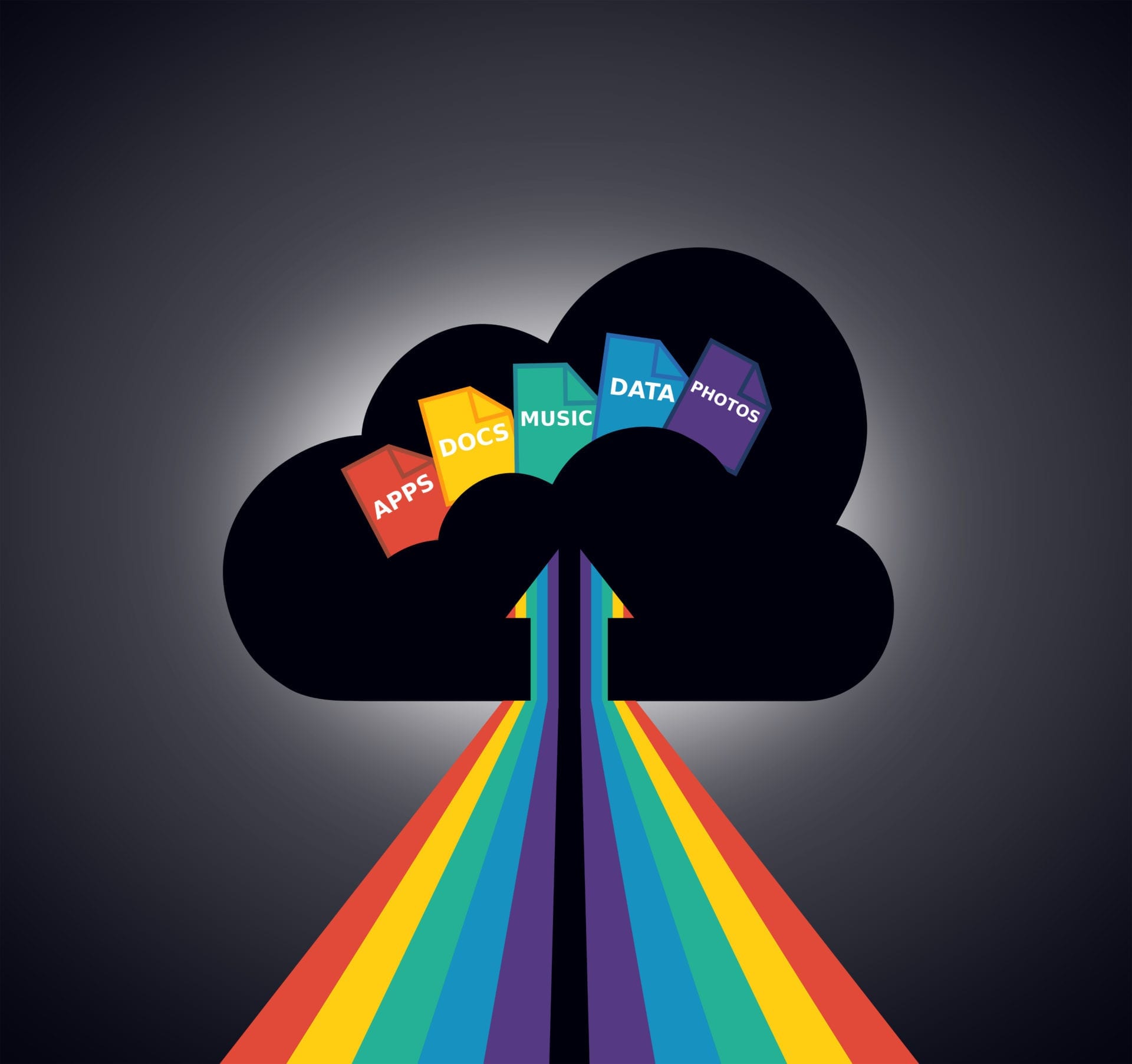
It’s a clear fact that digital signage in many forms and shapes will be a ubiquitous feature in our smart cities. As modern IoT and AI technologies are applied to our public infrastructures, enterprise and commercial services, more and more digital interactions and engagements are bound to become part of the daily life. Digital signage will provide the interface for people to engage with these technologies.
Like the previous years, we will see more attractive displays than ever before and more enhanced technologies to publish relevant and dynamic content in order to boost ROI.
There is no shortage of digital signage trends to keep an eye on this year. So, we’ve put together our list of the 8 digital signage trends to look out for throughout this year, so, let’s jump straight in.
1- Get Ready for What’s Beyond 4K
Over the past few years we’ve seen massive improvements in the graphical capabilities of digital displays, and these improvements show no sign of slowing down. From Ultra HD (UHD) to 4K and even 8K, digital displays are becoming crisper, clearer, and more visually appealing so as produce both innovative and informative displays and improve their performance as eye-catchers.
Reflective displays are also one of the latest hot topics when it comes to digital signage and, while the currently lack the refresh rates required for displaying rich video, businesses and organisations are currently increasingly looking to reflective displays as a cheaper, more mobile solution.
Frame rates among digital signage are on the rise though. With the industry currently shifting from sRGB to BT.2020, frame rates of up to 120p as well as both 4K and 8K displays. To top it off, BT.2020 is also capable of producing a colour field that is greater than that of which the human eye can perceive.
Future digital signage displays could also feature haptic technologies that use electrostatic fields to stimulate the nerve endings of the fingers in a certain way that fools the brain into thinking they are touching different textures. This technology, if implemented, could totally transform how digital signage displays are interacted with.
2- Applying Big Data Analytics to Gather Deeper Customer Behavior Insights
As is always the case, no single technology is ever developed alone. With the rise of artificial intelligence (AI), machine learning, automation, the internet of things (IoT) and the use of big data, digital signage isn’t short of cutting-edge technologies that could enhance and improve its features and functions.
The use of big data within retail digital signage, for example, has given retailers the power to collect valuable customer interaction data to enable insights into customer tendencies and behaviors to improve their engagement techniques and evaluate their effectiveness.
Artificial intelligence and machine learning are another two technologies with the potential to revolutionise digital signage. By understanding customer behaviours and processing vast amounts of data AI and machine learning technologies can learn to understand and predict current or future trends and habits.
Sub-optimal performance of digital signage can often be worse than not having it at all, so choosing the right technology to integrate will become an increasingly important consideration as the choice of technologies increases.
3- Digital Signage-as-a-Service to Become More Viable With SD-WAN
Cloud computing advancements on the back of SDN and edge computing technologies has brought about a lot of ease and economy in deploying multi-site and large-scale network applications. Mission critical digital signage applications can be a beneficiary of bigger bandwidth internet and wan optimization innovations such as SD-WAN.
Digital Signage-as-a-Service are cloud-based solutions that offer service model benefits for customers who do not want to have the hassle of buying and maintaining their own software licenses and servers. This decision could be because of a preference for an operational expense model, lack of IT staff or simply the scalability and flexibility that the OpEx model offers. They still have to physically house and manage the display and player part of the network. But that’s mostly ‘set and forget’ if you are using hardened media player and display screen.

Display networks of places that run 24/7 and cover a large space or multiple locations are good examples of SaaS digital signage use cases. Think Airports, Rail Stations, Bus Stations, 24/7 Digital Billboards, etc.
Digital Signage SaaS provider offer 24/7 access to the web based Content Managed Server (CMS) hosted in the cloud and individual software licences for the media players deployed on the client’s end. Users or digital signage managers can login from anywhere on any device and manage their display content. Locally each screen or a batch of screens are connected with a Media Player that publishes content on them that it receives from the CMS.
When working with cloud based digital signage provider, you also get advanced network security packaged in your service as the providers normally have appropriate firewalls and a dedicated department to ensure security of the network on both sides. They manage dozens or hundreds of the accounts and can pay for a full featured sophisticated network security solution which benefits both parties in running their business without hick-ups.
4- Fresh Content Strategies Will Trend
Content has always been an incredibly important part of digital signage and as the technologies used to power and optimize them evolves, content will need to keep up with this evolution in order to further enhance their effectiveness.
Research has shown that millennials, who are in fact the fastest growing percentage of consumers, are no fans of direct hit or miss marketing approaches, instead preferring the sales message to be contained within a story or narrative. Long term campaigns are set to be a popular option for many users of digital signage as they increasingly tailor the efforts to meet the demands of a growing section of consumers.
Interactivity is another growing trend and will likely see a large amount of time and effort put into in order to further engage consumers and stimulate interests in products and brands. By allowing customers to interact with digital signage in a variety of ways, they become an increasingly effective method of promotion.
5- More AI-Powered Personalization for Better Retail Conversion
Advances in technology are also helping to create increasingly bespoke and personalized experiences.
Personalization is one of the most effective ways to both utilize technologies such as detection systems and machine vision and improve customer engagement, creating the potential for much more meaningful and relevant interactions with consumers.
The integration of technologies that enable better connectivity, intelligence and responsiveness is enhancing the capabilities of digital signage to become much more personalized, with smart kiosks enabling people to plan their day becoming an increasingly popular option for larger retail outlets.
Facial features detection technology is being used in Digital Signage to capture demographic information of the customer in sight and show product that is most appealing to that demographic based on big data analysis.
People don’t pay attention to signage that is irrelevant to them, so personalization of individual ads or entire campaigns could lead to much higher conversion levels than a one size fits all approach.
6- 3D Wayfinding Solutions will rise in popularity
Wayfinding solutions are becoming very popular tool for convenience of people visiting large public spaces or buildings. Being able to pinch, zoom and rotate the interactive 3D maps of the building allows for quick understanding of where you are and where you want to go. Hospitals, Malls, Casinos, Museums, Expo’s, cruise ships and many other type of public spaces are going to increase adopting digital wayfinding systems and 3D mapping will be a key driver of a lot of those demands.
7- UHD Interactive Digital Whiteboards will Adorn Modern Office Spaces
Meeting and Boardrooms can’t be slick enough without having an UHD interactive digital whiteboard. It’s a luxury that may or may not make it to your office soon but it certainly has a lot of appeal and value to make the cut in the 2018 IT spend in many modern enterprises and institutions. Samsung’s Flip is an example of a fully mobile and interactive digital flipchart that is portable, you can write on it with anything including your finger. You can flip it, rotate it, write on it connect your laptop to display on it, and much more. Of course, there are a number of other variations of this for educational, enterprise and other applications already available in the market.

8- Network Security of the Digital Signage Network will take more attention
As the technologies we invent continue to connect us even further, so do they continue to enable new threats and risks to evolve and emerge. Digital signage that is connected to a network is as at risk as any other device and so will need to be protected against the various threats they could face.
Unauthorized access of digital signage can do significant damage to both a business’s reputation and network infrastructure. To avoid this double whammy, enterprises and organisations that use connected digital signage systems will need to ensure that they have adequate security in place should they ever become the target of such an attack.
This is not requirement has not gone unnoticed and many suppliers are now choosing to put their products through rigorous testing in order to demonstrate to both existing and potential customers that their digital signage has the appropriate protection from certain threats.
The use of artificial intelligence and automation will likely also play a part in security efforts for network-connected digital signage as it has done in various other technologies and industries.






